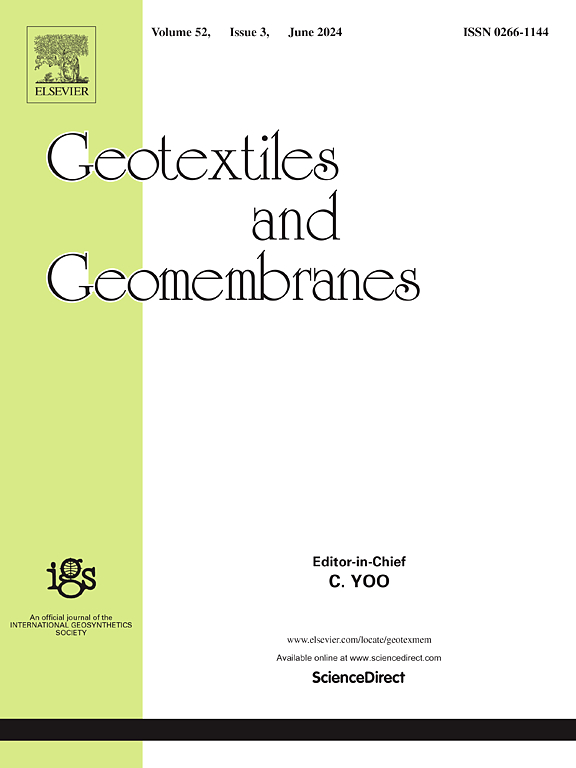Investigation on the effect of interface temperature on soil-reinforcement interaction mechanism by pullout test
IF 6.2
1区 工程技术
Q1 ENGINEERING, GEOLOGICAL
引用次数: 0
Abstract
To investigate the effect of interface temperature on the soil-reinforcement interaction mechanism, a series of pullout tests were conducted considering different types of reinforcement (geogrid and non-woven geotextile), backfill (dry sand, wet sand, and clay), and six interface temperatures. The test results indicate that at interface temperatures of 0 °C and above, reinforcement failure didn't occur during the pullout tests, whereas it predominantly occurred at subzero temperatures. Besides, the pullout resistance for the same soil-reinforcement interface gradually decreased as the interface temperature rose. At a given positive interface temperature, the pullout resistance between wet sand and reinforcement was significantly higher than that of the clay-reinforcement interface but lower than that of the dry sand-reinforcement interface. Compared with geotextile reinforcements, geogrids were more difficult to pull out under the same interface temperature and backfill conditions. In addition, the lag effect in the transfer of tensile forces within the reinforcements was significantly influenced by the type of soil-reinforcement interface and the interface temperature. Finally, the progressive deformation mechanism along the reinforcement length at different interface temperatures was analyzed based on the strain distribution in the reinforcement.
通过拉拔试验研究界面温度对土-筋相互作用机理的影响
为了研究界面温度对土-筋相互作用机制的影响,进行了一系列考虑不同类型加筋(土工格栅和无纺布)、回填体(干砂、湿砂和粘土)和6种界面温度的拉拔试验。试验结果表明,在0℃及以上界面温度下,拉拔试验中不发生钢筋破坏,而在零下温度下主要发生钢筋破坏。随着界面温度的升高,同一土加固界面的拉拔阻力逐渐减小。在一定的正界面温度下,湿砂-钢筋界面的拉拔阻力显著高于粘土-钢筋界面,而低于干砂-钢筋界面。在相同的界面温度和回填条件下,土工格栅比土工布加筋更难以拔出。此外,筋土界面类型和界面温度对筋土内部拉力传递的滞后效应有显著影响。最后,根据钢筋内部的应变分布,分析了不同界面温度下沿钢筋长度方向的渐进变形机制。
本文章由计算机程序翻译,如有差异,请以英文原文为准。
求助全文
约1分钟内获得全文
求助全文
来源期刊

Geotextiles and Geomembranes
地学-地球科学综合
CiteScore
9.50
自引率
21.20%
发文量
111
审稿时长
59 days
期刊介绍:
The range of products and their applications has expanded rapidly over the last decade with geotextiles and geomembranes being specified world wide. This rapid growth is paralleled by a virtual explosion of technology. Current reference books and even manufacturers' sponsored publications tend to date very quickly and the need for a vehicle to bring together and discuss the growing body of technology now available has become evident.
Geotextiles and Geomembranes fills this need and provides a forum for the dissemination of information amongst research workers, designers, users and manufacturers. By providing a growing fund of information the journal increases general awareness, prompts further research and assists in the establishment of international codes and regulations.
 求助内容:
求助内容: 应助结果提醒方式:
应助结果提醒方式:


